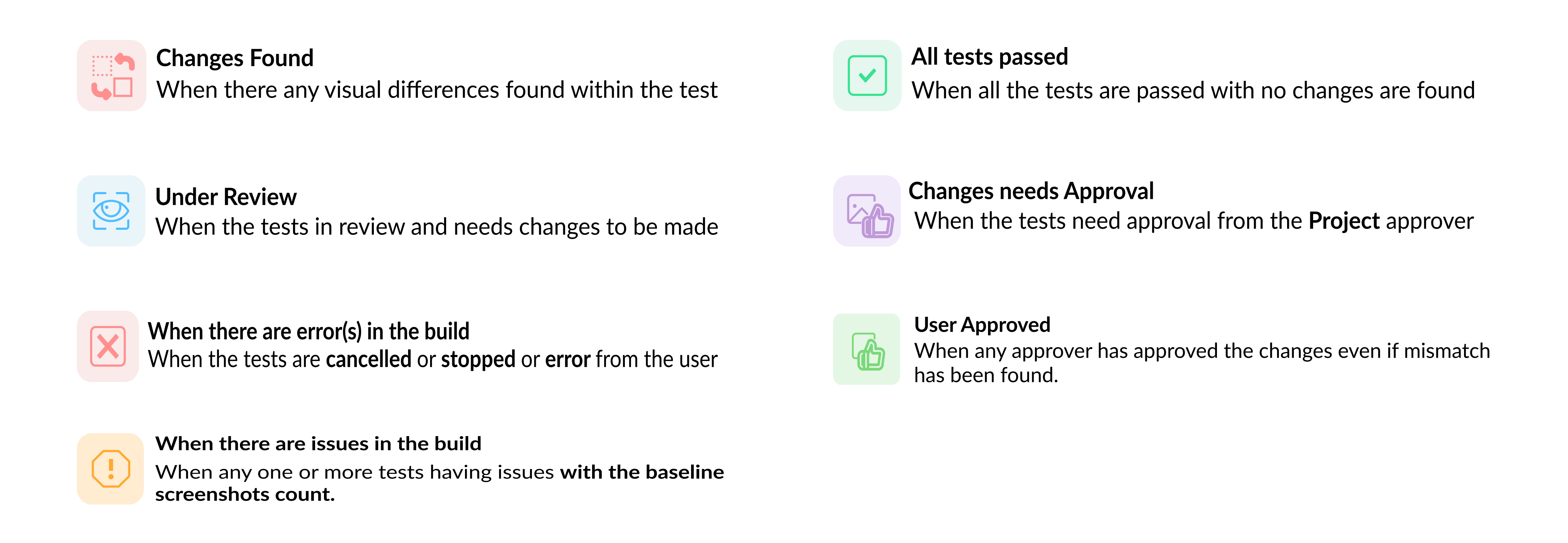Build Configuration and Options for Smart UI
Using the LambdaTest platform, perform regression testing in just one click and explore various possible solutions for grouping your screenshots into different builds and map as per your testing suite needs.
Enabling build mapping for multiple screenshots
If you have multiple screenshots running the same test suite and want to run the comparison for the same test suite. We have to enable the mapping with the smartUI.build to be added your capabilities.
- Selenium
- Cypress
- Playwright
- Puppeteer
- K6
let capabilities = {
"smartUI.build": <Your_Build_Name> // Please add your build name of choice here
}
"smart_ui": {
"build": <Your_Build_Name> // Please add your build name of choice here
}
const capabilities = {
'LT:Options': {
"smartUIBuildName": <Your_Build_Name> // Please add your build name of choice here
}}
const capabilities = {
'LT:Options': {
"smartUIBuildName": <Your_Build_Name> // Please add your build name of choice here
}}
const capabilities = {
'LT:Options': {
"smartUIBuildName": <Your_Build_Name> // Please add your build name of choice here
}}
Enabling build as a baseline
If you want to mark your build as a baseline from your test suite while executing tests then you have to enable the below mentioned capability configuration needs to be enabled.
- Selenium
- Cypress
- Playwright
- Puppeteer
- K6
let capabilities = {
"smartUI.baseline": true / false, // Enable if you want to update to a new baseline build
};
"smart_ui": {
"baseline": true/false // Enable if you want to update to a new baseline build
}
const capabilities = {
'LT:Options': {
"smartUIBaseline": true // Please add if you want to make this build as baseline
}}
const capabilities = {
'LT:Options': {
"smartUIBaseline": true // Please add if you want to make this build as baseline
}}
const capabilities = {
'LT:Options': {
"smartUIBaseline": true // Please add if you want to make this build as baseline
}}
Build Features
The following are the list of features that are available for the build process in SmartUI:
- All the screenshots are grouped together as a one build.
- The screenshots are mapped from the baseline to the Comparison screenshot in the same sequential pattern as per the baseline build.
- Add additional screenshots if needed for the existing build by using the same build name in the capabilities. This will add new screenshots to the build.
- You can also update any build of choice as a new Baseline build.
We currently only support one baseline for one project in our current version. We recommend you to create a new project for multiple baseline builds
Build Status Information
We are provide multiple build status options for the project owners to check the status of builds and take required actions to the screenshots by the approver(s).

